Notice: Undefined variable: page in /home/vrxdg1855sn3/public_html/wp-content/themes/72tree/content.php on line 15
Notice: Trying to get property 'ID' of non-object in /home/vrxdg1855sn3/public_html/wp-content/themes/72tree/content.php on line 15
Elm Tree Diseases Symptoms and Treatments
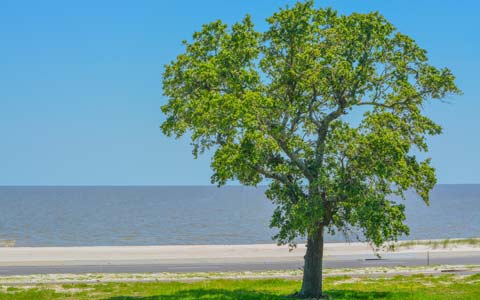
Prevent your elm tree from rapid decline and death due to disease. Knowing how to identify and treat elm tree diseases will help you keep them healthy and thriving.
72tree.com assembled the following elm tree disease information, symptoms, and what treatments can help you save them from decline and death.
Elm Tree Disease
The following are some of the more common diseases that affect elm trees (Ulmus) and the treatments used to stop them from killing the trees.
Dutch Elm Disease (DED)
This disease was introduced to the U.S. in the 1930s and has since decimated the American elm (Ulmus americana) population. All native elms and European elms are susceptible, and the disease, 90 years later, still poses a significant threat.
Dutch elm disease is caused by two closely related fungi species (Ophiostoma ulmi and Ophiostoma novo-ulmi), the latter being responsible for most of the disease’s devastation. This fungus species attacks the elm’s vascular system. The tree, in turn, tries to stop the spread of the fungus by producing tyloses (plug-like structures) that block the flow of water and nutrients, contributing to the tree’s demise.
Dutch Elm Disease Symptoms Include:
• Premature leaf drop.
• The first symptom in infected trees usually appears as a small yellow or brown wilting area of foliage referred to as “flagging,” often starting at the edge of the crown.
• Wilting rapidly spreads inward toward the trunk.
• Leaves wilt, yellow, and eventually turn brown.
• Branch death.
• Brown streaking in sapwood (revealed by removing the bark or by cutting a cross-section of the dying branch).
This disease advances very fast. Depending on the health of the tree and time of infection, Dutch elm disease can lead a healthy adult elm tree to its death in a single growing season.

Dutch Elm Disease Treatment:
• Extensive pruning of infected areas.
• Remove severely infected trees.
• Burn or bury all infected wood (kills beetle larvae).
• Sever root graphs (connections) with neighboring trees.
• Preemptively treat uninfected trees with pesticides targeting elm bark beetles.
• Sterilize all pruning and maintenance equipment and materials after contact with infected trees.
• Create bait trees by treating them with cacodylic acid, killing the tree, and luring the fungus carrying beetles (this method suppresses brood production, making the beetle more manageable).
• Apply anti-fungal sprays to areas where infected trees are or have been.
• Plant DED resistant cultivars.
Note: If Dutch elm disease is caught early enough, extensive pruning may save the tree.
Multiple DED-resistant American elms and hybrid elm species are currently available and being developed. Some disease-resistant cultivars include:
• Accolade
• Cathedral
• Discovert
• Homestead
• Jefferson
• Morton Glossy
• Morton Stalwart
• New Horizon
• Pathfinder
• Pioneer
• Prospector
• Regal
• Valley Forge
Tip: Hire an ISA certified arborist to accompany or supervise all DED treatment strategies.
Elm Yellows (Formerly Elm Phloem Necrosis)
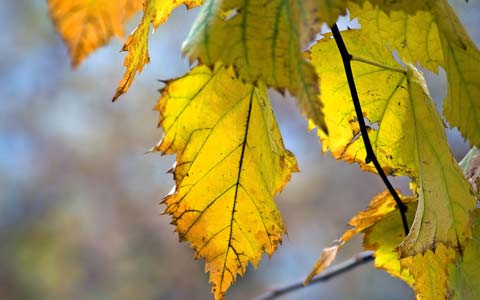
Elm yellows is an aggressive disease affecting elm trees that is spread via root grafts or leafhoppers. Also known as elm phloem necrosis, the disease is fast-moving, has no cure, and occurs principally in the eastern United States and southern Ontario.
This disease is caused by phytoplasmas that infect the tree’s phloem (inner bark). This infection quickly kills the tree’s phloem, girdling the tree and stopping its flow of water and nutrients.
Elm Yellows Symptoms Include:
• Root debilitation (root hairs die).
• The phytoplasma infection kills the phloem (causing it to change color and take on a wintergreen-like smell.
• Inner bark tissues exhibit butterscotch or light brown discoloration, usually in streaks.
• The crown will turn yellow and droop all at once.
• Leaf drop and death of branches.
Inner bark tissue discoloration may occur in branches, twigs, and the trunk on DED infected trees, where discoloration caused by elm yellows is more commonly found in the trunk.
Elm yellows symptoms can appear any time during the summer but are most common in mid-to late-summer.
Elm Yellows Disease Treatment:
• There is no cure for this disease. Once a tree exhibits signs of elm yellows, it is highly recommended to remove and destroy the tree. Thus, eliminating inoculum sources from the area.
• Thorough root removal after felling an infected tree.
• Control or management of phloem-feeding insects like leafhoppers and spittlebugs.
• Topical application of pesticides to deter insect feeding.
• Apply anti-fungal sprays to areas where infected trees are or have been.
Plant Asian and European elm species in areas where elm yellows is present. These cultivars exhibit resistance to this disease.
Note: Elm yellows does not move into new areas as quickly as Dutch elm disease, providing a larger window for infected tree removal, preventive treatments, and containment.
Laetiporus root rot (formerly Polyporus sulfureus)
As elm trees age, the damage inflicted by butt and root rot fungi can severely compromise their structural stability. Failure eventually occurs during strong winds or severe weather, often without warning, resulting in severe property or physical damage. Root and butt rot can be caused by one of many wood-decaying fungal pathogens, but one of the more commonly occurring in elm trees is Laetiporus sulphureus.
Laetiporus Root Rot Symptoms Include:
• Canopy dieback.
• Stunted shoots.
• Undersized or pale-colored foliage.
• Premature fall color change
• Clusters of yellow to salmon to orange, shelf-like fruiting structures (conks) that turn white with age form in summer or autumn months on the trunk near the ground and fall off during the winter.
• The conk’s underside has tiny pores in which millions of spores are formed.
• New conks form in the following summer and autumn months. The bark where the fruiting structures form will be slightly depressed and often cracked.
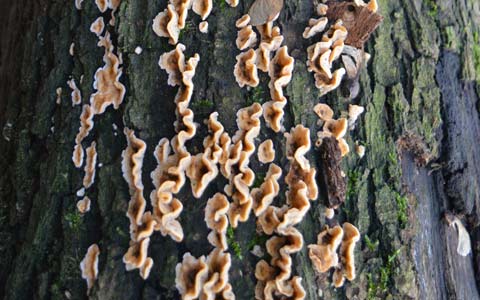
Root and butt rot fungi damage may only be exposed when trees suffer windthrow or windsnap during strong winds or severe weather. In some cases, Root and butt rot symptoms are present but provide little to no information on the depth of decay in the roots and lower trunk.
Laetiporus Root Rot Treatment:
• Root rot, in nearly all instances, is a case for immediate tree removal. Especially when fruiting structures are present at the trunk base or on the root flare.
• Hire an ISA certified arborist to evaluate the infected tree and recommend a course of action.
Note: Tree root diseases can be best controlled by preventive measures. When planting new elm trees, select disease-resistant cultivars, only plant in well-drained soil, and avoid overwatering. Chemicals, like chloropicrin or methyl bromide, don’t cure the disease but can reduce the level of the infection. Such fumigants work best when applied in and around the base of an infected tree or in the hole left behind after tree removal.
What is Killing My Elm Trees?
In this article, you discovered information on some of the more deadly elm tree diseases, the signs they display, and how to treat or control them.
Knowing how to recognize and treat elm tree diseases can help you catch and treat a disease early enough to potentially save your tree.
Ignoring the signs of a diseased elm tree can result in catastrophic damages when that tree falls on your home or causes personal injuries.
Sources:
hyg.ipm.illinois.edu/pastpest/199804g.html
mda.state.mn.us/dutch-elm-disease
mortonarb.org/trees-plants/tree-and-plant-advice/help-diseases/dutch-elm-disease
extension.umn.edu/trees-and-shrubs/dutch-elm-disease-resistant-elm-trees
hyg.ipm.illinois.edu/pastpest/199804g.html
ag.umass.edu/landscape/fact-sheets/elm-yellows
ipm.ucanr.edu/PMG/PESTNOTES/pn74109.html
Notice: Undefined variable: page in /home/vrxdg1855sn3/public_html/wp-content/themes/72tree/content.php on line 15
Notice: Trying to get property 'ID' of non-object in /home/vrxdg1855sn3/public_html/wp-content/themes/72tree/content.php on line 15
How To Avoid Invasive Tree Roots Destroying Your Landscape
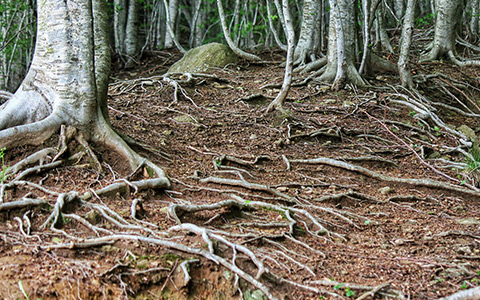
Invasive tree roots can destroy your turf, buckle concrete, and quickly become a very costly nuisance. Knowing which tree species to avoid planting and how to deal with aggressive trees already on your property will save you time, money, and stress.
72tree.com gathered information on invasive tree roots, the damages they cause, how to stop them, and which species you should not plant.
What Are Invasive Tree Roots
Invasive tree roots quickly grow in search of water and nutrients, finding their way under walkways, driveways, building foundations, sidewalks, water lines, sewer pipes, etc. As these roots thicken, they can cause these structures to fracture and buckle.
A common trait of invasive plants and tree roots is that they are fast-growing. Once these roots find a water source, they take hold and continue spreading to find more water sources.
Invasive Tree Root Damage
Once invasive tree roots spread across your yard or landscape, all they need is a water source. When that water source is tapped into, the roots thicken and tear up your turf, while breaking through nearly everything they have grown beneath.
Among the most expensive damages, invasive tree roots can cause: when they grow under the foundation of your home.
Note: These roots don’t just break through concrete or asphalt, they can cause the earth surrounding them to heave upward.
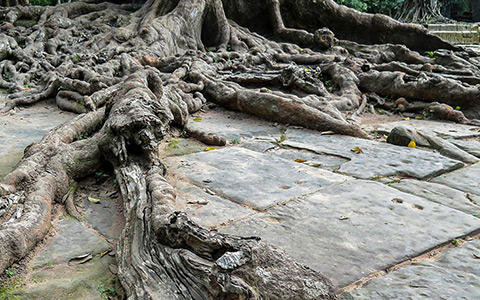
Read 72tree.com/tree-roots-buckling-concrete-driveway/ to uncover the devastation these roots can cause and ways to repair the damage they cause.
How To Stop Invasive Tree Roots
Don’t plant tree species with invasive roots. If you inherited these trees with your property or were ill-advised when you purchased and planted a tree, here are some of the measures you can take to slow these roots down:
1. Install root barriers to a depth of 18 to 24 inches (the majority of tree roots are found within the top 18 inches of soil). You can install these barriers around young trees or around structures to stop or divert the direction of the roots. When installing barriers, allow enough space for tree roots to form a stable root plate. The root plate generally surrounds the trunk and extends to the tree’s drip line.
2. Root pruning is an option that should be done by an arborist. Pruning tree roots can leave the tree vulnerable to disease and infestation.
3. After planting a tree, provide it with frequent deep waterings to encourage its roots to grow deeper.
4. Plant trees in locations where they can achieve their full growth potential without interfering with structures and landscape features.
5. Make sure the tree you are planting is appropriate for your hardiness zone. Planting outside the tree’s zone may trigger its roots to become aggressive to supply it with enough moisture.
6. Often times, the only solution for invasive root problems is to have the tree removed and the stump ground.
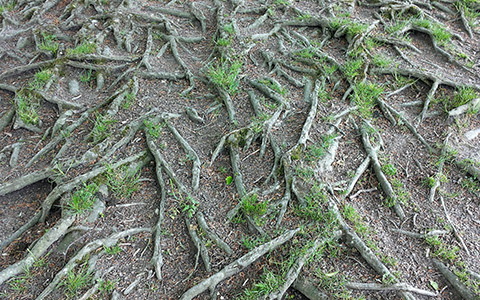
Invasive Tree Root Species
The following is a brief list of tree species that have displayed invasive root tendencies, are high-maintenance, and short-lived (when compared to similar non-invasive species):
• Aspen (Populus)
• Eastern Cottonwood (Populus deltoides)
• Empress or Princess Tree (Paulownia tomentosa)
• English Hawthorn (Crataegus monogyna)
• English Holly (Ilex aquifolium)
• English Laurel (Prunus laurocerasus)
• Golden Chain Tree (Laburnum)
• Horse Chestnut (Aesculus hippocastanum)
• Mimosa (Albizia julibrissin)
• Norway Maple (Acer platanoides)
• Saltcedar (Tamarix ramosissima)
• Siberian elm (Ulmus pumila)
• Silver Maple (Acer saccharinum)
• Sweet Cherry (Prunus avium)
• Sweet Gum (Liquidambar styraciflua)
• Sycamore (Platanus occidentalis)
• Sycamore Maple (Acer pseudoplatanus)
• Tree of Heaven (Ailanthus altissima)
• Weeping Willow (Salix babylonica)
• White Mulberry (Morus alba)
• White Poplar (Populus alba)
Many of the trees listed above can grow to enormous proportions (in height and width) and likely are not appropriate for small to medium-sized yards and landscapes.
Regardless of the species, you would like to plant, do your homework on how it grows, where it grows, and problems others have had with it. You can also hire an arborist to assess your yard or landscape before planting the tree. This will help you give the tree a healthy beginning.
Read more about planting trees by visiting 72tree.com/tree-planting-guide/
Invasive Tree Roots
In this article, you discovered what invasive tree roots are, the damage they are capable of, what you can do to stop them, and several of the species to avoid.
By addressing invasive tree roots as early as possible, you can avoid significant damages to your property, water supply, sewage line, and your home’s foundation.
When you allow invasive tree roots to grow unchecked, you are inviting them to tear up your turf, destroy structures, and upheave the earth they grow in.
Sources:
mortonarb.org/trees-plants/tree-and-plant-advice/horticulture-care/tree-root-problems
selectree.calpoly.edu/right-tree-right-place#invasive
aces.nmsu.edu/ces/yard/2008/091108.html
extension.tennessee.edu/publications/Documents/SP628.pdf
Notice: Undefined variable: page in /home/vrxdg1855sn3/public_html/wp-content/themes/72tree/content.php on line 15
Notice: Trying to get property 'ID' of non-object in /home/vrxdg1855sn3/public_html/wp-content/themes/72tree/content.php on line 15
When Should I Cut Down A Tree on My Property?
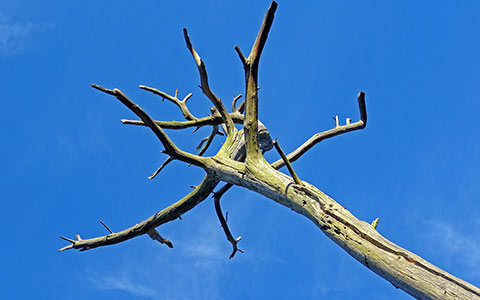
Does your tree look sick or like it’s going to fall? By knowing the signs of a hazardous tree on your property, you can take action to prevent catastrophic damages and losses.
72tree.com gathered information on the signs of a dead, dying, or dangerous tree, and whether or not it should be removed.
When Is Tree Removal Necessary?
You may need to remove your tree if it:
• Is dead or dying
• Is Rotting or hollow
• Has invasive or destructive roots
• Has been infested and poses a threat to surrounding trees
• Is diseased and could infect other trees or plants
• Poses an imminent threat to people, structures, or vehicles
Trees go through many phases as they mature. When any irregularities are detected, you should contact a professional tree service immediately. Have the tree professionally evaluated and make an informed decision on whether or not to remove the tree.
Is My Tree Dead or Dying?
The answer to that question is: Possibly. A deciduous tree may look dead, when in fact, it may only be dormant. Consider the following when evaluating your tree:
Deciduous Trees – A deciduous tree is one that loses its leaves in the fall and goes into a state of dormancy until the end of the winter season. These trees may look dead while in dormancy but are likely very much alive.
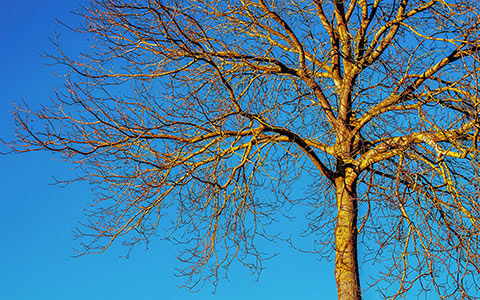
You can confirm this by performing a “scratch test” on a smaller branch or twig. If the twig is dead, it will be dry and brittle underneath the bark. A live one will have a shade of green and be moist under the bark.
Evergreen Trees – An evergreen tree maintains its foliage throughout the year. If you notice an excessive loss of foliage or the discoloration of a large portion of the tree, there may be root, sun, or wind damage.
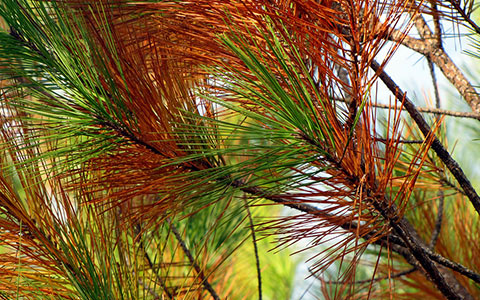
The following are signs of trouble for any tree and should be evaluated by a certified arborist immediately:
• The unusual or untimely loss of foliage
• Sections of the tree failing to leaf out in the spring
• Discoloration or wilting of a section of the tree crown
• New foliage is stunted, wilted, or discolored
• Mushroom conks are growing on the trunk or on surface roots
• Sprouts or suckers growing from the roots of the tree
• Entry or exit holes from boring insects
• Dead branches in the crown
• Sudden shedding of branches
• Your tree has begun to lean
• Neighboring trees are dying suddenly
• Mold or mildew has grown on a significant portion of the foliage
• There is significant damage to foliage from an insect infestation
• Your tree was struck by lightning
• Large portions of bark have been damaged or fallen off the trunk
• A severe storm has stripped your tree of foliage and damaged multiple branches
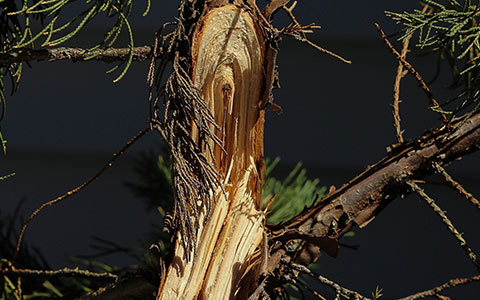
Through the life of a tree, it will face many health threats. In most cases, it can overcome those threats and continue thriving. However, when the tree is confronted by multiple threats, its health may decline, allowing some of those threats to damage it severely enough to kill it.
Many of the above signs can be mitigated or completely avoided when detected in their earliest stages. You can accomplish this by having an annual inspection performed on your tree(s) in late winter or early spring.
Read more about identifying tree diseases and trouble at 72tree.com/signs-diseased-tree-dieback-suckers-water-sprouts/
Removing Nuisance Trees from Your Property
Some tree species can become a tremendous nuisance as they mature and thrive. Some of the problems they may cause include:
• Interfering with power lines
• Branches overhanging your house, garage, or neighbor’s property
• Invasive roots breaking foundations, invading septic tanks, or buckling concrete
• Large roots growing along the ground surface
• The tree is self-pruning and begins to shed large limbs (eucalyptus trees do this frequently)
Invasive root systems like those of the aspen species can cause massive amounts of damage in a short amount of time. Read more about invasive root problems at 72tree.com/tree-roots-buckling-concrete-driveway/
In cases where a tree is near or on your property line, arguments and disputes may occur between neighbors. Before taking any action, you will need to determine ownership and/or responsibility of that tree. Read 72tree.com/who-is-responsible-overhanging-tree-branches/ to learn how this is determined.
Do I Need A Tree Removal Permit
Cities and municipalities across the country have tree ordinances in place to protect or preserve their trees. That said, there are cases in which dead trees or trees that pose an imminent threat of falling can be removed immediately and without a permit. However, you will likely be required to document the hazard and the need for removal fully. A certified arborist’s report, in some municipalities, may also be required.
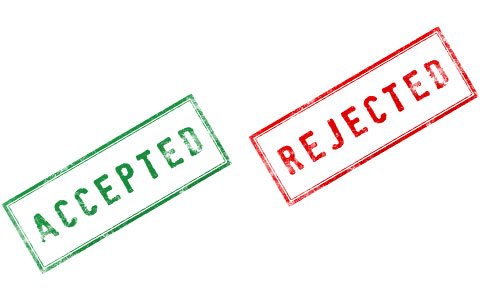
You can hire our arborist, or search for an arborist or verify one’s credentials by visiting treesaregood.org/findanarborist/arboristsearch
Special Trees – Some tree species are vigorously protected in some municipalities, and their removal, for any reason without permission, may result in steep fines, recompense, and even planting new trees of the same or predetermined species, as defined by the tree ordinance. These reasons may include:
• Historical significance
• Age
• Size
• Rare or protected species
• Wildlife refuge
• Trees with a specific diameter at breast height (DBH)
Whenever you have a tree that needs to be removed (for any reason), consult your city’s codes and ordinances to determine whether you need a permit or not. The following may help as well:
• Visit your city’s website and search for tree removal permit information
• Call your city’s arborist or Forestry department
• Hire a professional tree service that can acquire the appropriate permits and do the job.
When it comes to trees, medium and large trees should always be handled by professionals. If you try to cut such a tree down without the proper knowledge and equipment, you may be placing your property and your life in jeopardy.
Removing Trees from Your Property
In this article, you discovered how to determine when a tree is dead, dying, has become a hazard, and if it should be removed.
By taking action when you detect a tree illness, infestation, or damage, you are preserving the safety of your property.
When you delay taking care of sick or wounded trees, you are leaving an open invitation for catastrophic events that can destroy your property and threaten the well-being of you and your loved ones.
Sources:
extension.umd.edu/hgic/topics/how-do-you-decide-when-remove-tree
extension.umn.edu/solve-problem/plant-diseases#tree-and-shrub-diseases-1872363
entomology.ca.uky.edu/ent43
myminnesotawoods.umn.edu/wp-content/uploads/2014/06/MNLawTrees-NuisanceTrees.pdf
Notice: Undefined variable: page in /home/vrxdg1855sn3/public_html/wp-content/themes/72tree/content.php on line 15
Notice: Trying to get property 'ID' of non-object in /home/vrxdg1855sn3/public_html/wp-content/themes/72tree/content.php on line 15
Who is Responsible for Overhanging Tree Branches
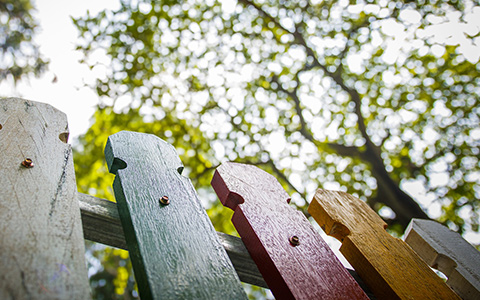
Don’t accept liability for a tree or its overhanging branches without clarifying responsibility. Once you know how to determine responsibility for a tree and its overhanging branches, you can better reach fair solutions with your neighbors during a tree dispute.
72tree.com gathered the following information on determining who owns and is responsible for a tree’s overhanging branches, and what actions to take.
Trees and Your Property Line
Whether you find yourself on the giving or receiving end of an overhanging tree complaint, it is essential to know who owns the tree in question.
When you purchased your property, you were likely required to get a property survey. If many years have elapsed or there is difficulty determining where the property line is, have a new survey conducted with the surveyor physically marking the property line.
All trees growing on your property with their trunks inside your property line are your responsibility.
In the rare case that a tree is growing directly on the property line, ownership and responsibility of that tree are equally shared between you and your neighbor.
Overhanging Tree Branches
As a tree grows upward, it also grows outward. Over time, some of those branches can grow past your property line overhanging your neighbor’s yard or home. The responsibilities of each property owner are typically as follows:
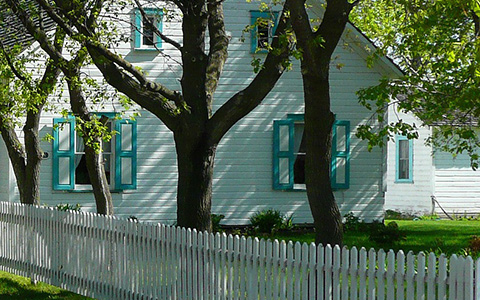
Owner of the Tree – You are responsible for the overall care of the tree, including:
• Watering, mulching, and fertilizing
• Staking or anchoring if the tree becomes unstable or is leaning
• Trimming or pruning the canopy (up to your property line)
• Detecting and treating illnesses and insect infestations. Learn more about tree health problems and solutions at 72tree.com/9-common-tree-health-problems-solutions/
If your tree succumbs to disease, infestation, or dies for any reason, the responsibility to remove the tree is yours. You could be held responsible for the damages it may cause if it should fall.
The Neighbor – Your neighbor is responsible for the following:
• The trimming or pruning of overhanging branches up to their property line*
• Cleaning fallen leaves, needles, twigs and other debris from the overhanging branches
Your neighbor should also make any concerns or complaints about potential hazards from the tree known to you.
If your neighbor documents this communication or files a complaint with the town, and you do nothing, you may be held liable for damages caused by any portion of the tree falling on your neighbor’s property.
*All trimming or pruning activities must be done in a way that promotes the health of the tree. If your neighbor’s actions result in the declining health or death of the tree, they may be held liable for the cost of the replacement of that tree.
Your Tree Falls on Your Neighbor’s Property
If your tree or a portion of the tree should fall on your neighbor’s property, the health of the tree when it fell is vital in determining responsibility.
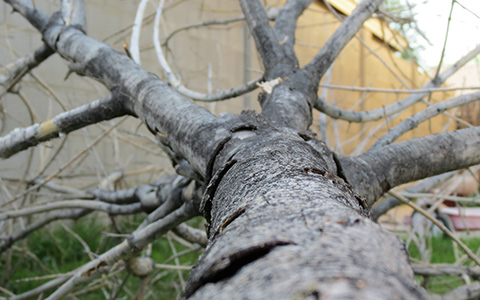
Healthy Tree – If the tree was healthy and well maintained with no signs of decay or infestation, the removal and any damages caused by the tree will be your neighbor’s responsibility.
The majority of homeowners insurance providers will cover such a claim.
Diseased or Dying Tree – If your tree had clear signs of disease, infestation, rot, or your neighbor filed a complaint about the hazard, you could be held liable for all damages caused by the falling tree.
Protect yourself and your neighbors by hiring a trusted tree service to perform annual inspections of your trees. These inspections allow them to detect any potential trouble and recommend a course of action.
Learn more about what to do when a neighbor’s tree falls on your house at 72tree.com/my-neighbors-tree-fell-on-my-house-now-what/
View Obstruction Ordinances
Throughout the United States, there are a few cities with “view ordinances.” These ordinances state the importance of the view to the value of the property.
If your tree reaches a height that obstructs a neighbor’s view (in a city with such ordinances), you may be ordered to reduce the height of the tree or remove it.
Before planting new trees on your property, it is worth the time and effort to research your city’s laws for these specific ordinances. Once you know the limitations imposed by these ordinances, you can select the appropriate species to plant.
Overhanging Tree Responsibility
In this article, you discovered how tree ownership is determined, what you are responsible for when trees overhang a neighbor’s property, and their responsibilities.
By properly caring for your trees and having them inspected annually, you can detect potential issues early and get them resolved before turning into a problem or dispute.
If you choose to neglect the health of your tree(s), you can be held liable for all damages caused by that tree falling on your neighbor’s property or house.
NOTE: Cities, municipalities, and towns have ordinances that may vary from the information presented in this article. It is always recommended that you search for your city’s tree ordinances to fully inform yourself.
Sources:
http://agrisk.umd.edu/blog/frequently-asked-questions-can-i-cut-my-neighbors-tree-back-from-our-property-line
hg.org/legal-articles/neighbor-s-right-to-build-36677
extension.tennessee.edu/publications/Documents/SP687.pdf
secure.caes.uga.edu/extension/publications/files/pdf/C%201099_1.PDF
Notice: Undefined variable: page in /home/vrxdg1855sn3/public_html/wp-content/themes/72tree/content.php on line 15
Notice: Trying to get property 'ID' of non-object in /home/vrxdg1855sn3/public_html/wp-content/themes/72tree/content.php on line 15
A Beginners Guide to Tree Planting
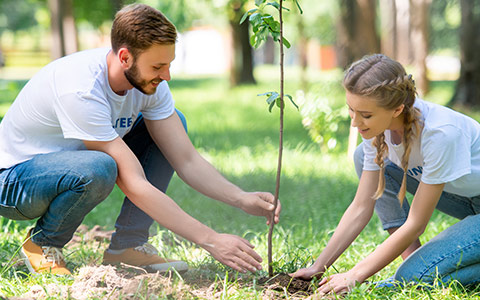
Your tree is more likely to die if you don’t consider the factors that affect its development during their planting. Your trees’ health is directly correlated to the time, location, pre-planning, and species that you choose ever before planting.
72tree.com assembled the following guide with professional tips to help you properly plant and care for your tree.
Best Time to Plant Trees
There is much debate as to when the best tree planting time is. For more moderate climates such as the south, southeast, or southwest, either early fall or early spring are appropriate planting times.
For locations where there is winter snow cover or ground freeze, spring (after the ground thaws) is the best time to plant.
Tree Location
Now that you’ve decided to plant a tree and identified the best time, you’ll need to choose a suitable location. In doing so, take the following factors into consideration:
Sunlight – Does the planting location get full sun (all day), partial sun (morning or evening), or full shade (no sun)
Water – Most tree species require well-drained soil. If your chosen location is in a low-lying area or a depression, water may accumulate and stand, leading to root rot and other diseases.
Tip: Verify that your location is well-drained after a rainstorm or run a hose at the site to see how the water accumulates or runs off.
Soil – The soil where you plant your tree should be loose, mixed with organic material, and turned to avoid compaction.
Tip: Many tree species can thrive in a soil pH level between 5 (acidic) and 7(neutral). You can raise the soil pH by adding lime or limestone and reduce the pH by adding aluminum sulfate, sulfur, manure, or compost (pH levels above 7 are alkaline).
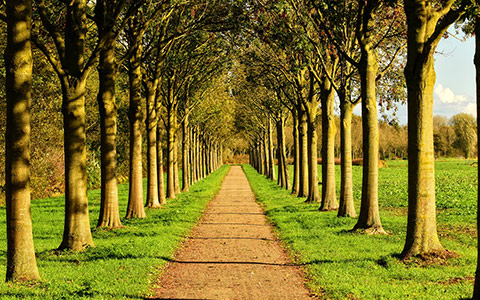
Spacing – When planting multiple trees, they can be spaced apart according to their mature canopy spread. Tree spacings from 20 to 60 feet apart are standard. This spacing allows the open-grown form of the tree canopy to develop naturally.
Conversely, when planted too close together, a tree may fail to reach its mature height and struggle to absorb enough sunlight and nutrients to remain healthy.
Tip: Follow spacing recommendations for your specific tree species.
Wind – The location you’ve selected should be observed over time to determine whether or not your tree will endure constant wind or violent wind gusts.
Tip: Stake young trees until they can support themselves without bending under pressure. Most trees will take one to two years before fully establishing their root systems.
Structures – A tree’s roots spread far from where it is planted. As roots spread, they thicken and may become invasive. When a tree is planted too close to a house, sidewalk, patio, or driveway, those roots can grow underneath the structure and break up or buckle the concrete.
Tip: Plant trees far from structures with concrete foundations or slabs, and install root barriers to protect building foundations, driveways, sidewalks, etc.
Protection – Weather and wildlife can stress or kill your tree as it matures. By planting shrubs near and around your tree, you can naturally lessen the impact of wind. Surrounding structures will also act in this capacity.
Tip: Discourage wildlife from grazing your tree’s foliage or damaging its bark by putting up chicken wire around the tree, using bark wraps, or by using chemical deterrents.
The USDA Plant Hardiness Zone Map defines planting zones from 1a to 13b. The zone in which you plan to plant a tree will determine which species you should select. You can determine your hardiness zone at planthardiness.ars.usda.gov/PHZMWeb/InteractiveMap.aspx
Tree Species
The species of tree you decide to plant can profoundly impact the surrounding landscape in various ways. Verify that the species you intend to plant is appropriate for the location in which you are planting and consider the following:
Deciduous or Evergreen Trees – If you want your tree to maintain a lush green appearance year-round, you are looking for an evergreen species which may include:
• Blue Spruce
• Scots Pine
• Green Giant Arborvitae
• Magnolia
• Holly
• Leyland Cypress
If you want to enjoy fall colors as your tree prepares to go dormant for the winter, you are looking for one of the many deciduous species which may include:
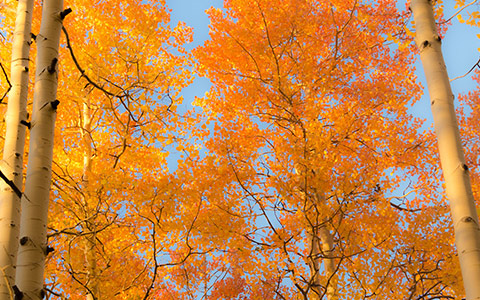
• Oaks
• Maples
• Birch
• Sweetgum
• Tulip
• Quaking Aspen
Tip: Regarding quaking aspens, the species has an invasive root system and will produce suckers that are clones of the original tree. When planting this species, be sure that it has enough space to grow and spread without obstruction.
Understory or Overstory – An understory tree may be best if your planting location is restricted or you desire a mid-sized tree. The following species are considered understory, and are shade tolerant reaching mature heights of 20 to 40 feet:
• Flowering Dogwood
• Eastern Redbud
• White Fringetree
• Japanese Maple
• Black Aldar
If you are looking for a tree that makes a statement by its size and you have the landscape to accommodate its growth, the following overstory species reach mature heights of 60 to over 100 feet:
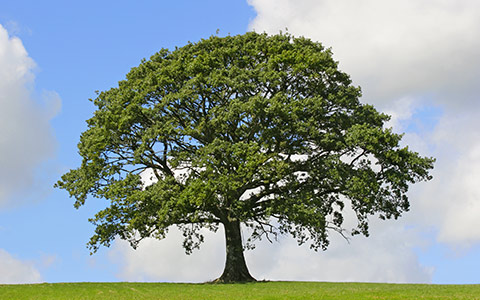
• Southern Magnolia
• Green Ash
• White Oak
• Southern Red Oak
Tip: When planting multiple trees, understory trees can be planted near overstory trees as protection from strong or persistent winds.
For more info, refer to 72tree.com/tree-buying-tips/ before purchasing the trees you intend to plant.
Planting Your Tree
When planting a seedling or sapling, the following should be considered in the preparation of the planting location:
Surrounding Soil – Organic material or pH stabilizing material should be mixed into the soil in no less than a 2-foot radius of where the tree will be planted.
Tip: When transplanting a more developed tree, treat the soil in a 3 to 4-foot radius of the planting location.
Dig the Hole – Measure the distance from the bottom of the trunk to the bottom of the roots or root ball; this is how deep your hole must be. The hole must also be wide enough for the entire root ball to fit without being cramped or bent.
Tip: To confirm the accuracy of the depth, allow the tree to rest in the hole paying particular attention to where the roots connect to the tree. Known as the root flare, it should remain just above the ground.
Water in the Hole – Before planting your tree, provide a deep watering for the hole, allowing water to soak deep into the earth below. This moisture will encourage roots to grow deep.
Plant the Tree – Now that your hole is dug, the soil enriched, and the ground watered, place your tree in the hole covering the roots with soil up to the root flare.
Tip: When covering the roots with soil, do not overly compact it. Water the newly planted tree and allow the soil to settle. As the soil settles, add more to the top, keeping the root flare just above ground level.
Watering – Your newly planted tree should receive a deep watering 2 to 3 times per week. Avoid shallow waterings as they encourage roots to grow to the surface.
Tip: Use a slow-release watering system which maintains constant moisture while allowing proper drainage for excess water.
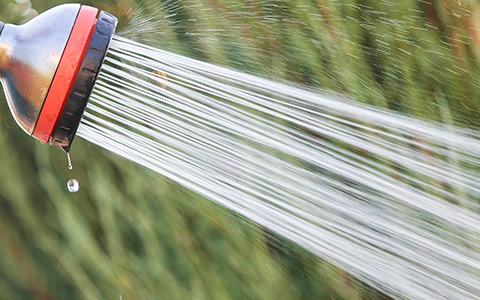
During rainy seasons, scale back the watering schedule and increase it during periods of drought. Don’t allow the soil to dry out for newly planted trees completely.
Fertilizer – If you have prepared the soil in and around the planting location, no fertilizing should be necessary for the first full year of growth.
Tip: Use organic mulch around the tree. As it decays, mulch releases nutrients into the soil. An added advantage is that mulch helps the soil retain moisture and warmth, both of which are fundamental for healthy root growth.
Tree Planting and Your Landscape
Your tree is likely to struggle and die without considering the factors that influence its growth when it is planted.
In this article, you discovered how to determine the correct tree species for your landscape, how to prepare the planting location, and pro tips to help you avoid common mistakes when planting a tree.
Your lack of knowledge about soil, sun, water, location, and species when planting a tree can result in its declining health and eventual death.
Sources:
extension.umn.edu/planting-and-growing-guides/watering-newly-planted-trees-and-shrubs
static.colostate.edu/client-files/csfs/pdfs/TreePlanting_636.pdf
extension.umn.edu/trees-and-shrubs/choosing-evergreens-your-landscape
Notice: Undefined variable: page in /home/vrxdg1855sn3/public_html/wp-content/themes/72tree/content.php on line 15
Notice: Trying to get property 'ID' of non-object in /home/vrxdg1855sn3/public_html/wp-content/themes/72tree/content.php on line 15
Oak Wilt Identification, Treatment, and Prevention
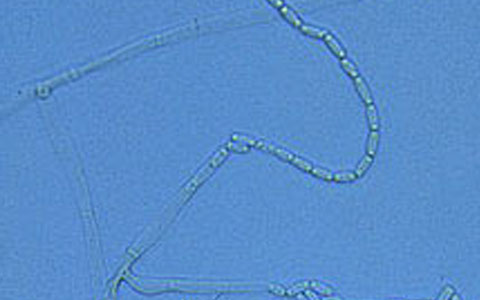
Don’t let oak wilt (Bretziella fagacearum) kill your tree. While few fungi can bring down the mighty oak tree, this is one of them.
Oak wilt is one of the most destructive tree diseases in the United States, and it’s on the loose, killing oak trees at nearly epidemic proportions. If your oak tree(s) appear to be in trouble, its problems may be caused by a fungus that, if not halted, will kill your tree in a matter of months.
72tree.com gathered essential information about oak wilt disease, how to identify it, treat it, and prevent it.
What is Oak Wilt?
Bretziella fagacearum, formerly known as Ceratocytis fagacearum, is the scientific name for oak wilt, and this fungal disease affects all species of the oak (Quercus) genus by disabling the water conducting system in these trees.
Based upon porosity and leaf shape, oaks are divided into two groups; red oaks and white oaks. Bretziella fagacearum affects these two groups differently:
White Oak Group – The species below that are part of this group have rounded leaf edges and pores clogged by tyloses.
• Quercus alba (the most commonly known white oak species)
• Quercus lobata (California white oak or valley oak)
• Quercus polymorpha (Mexican white oak or Monterrey oak)
• Quercus bicolor (swamp white oak)
• Quercus arizonica (Arizona white oak)
• Quercus garryana (Oregon white oak or Garry oak)
Tyloses are outgrowths on cells of xylem vessels. Tyloses fall from the sides of the cells and seal a tree’s vascular tissue to prevent or reduce damage.
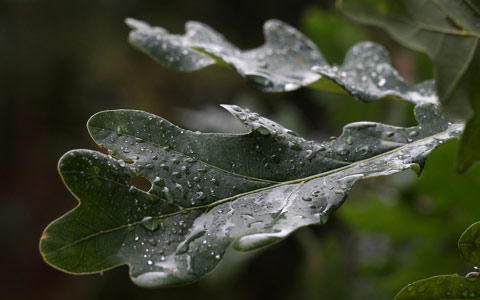
Red Oak Group – The species below that are part of this group have pointed leaf edges and large open pores:
• Quercus falcata (southern red oak)
• Quercus graciliformis (Canby oak or Chisos oak)
• Quercus buckleyi (Texas red oak)
• Quercus rubra (the northern red oak)
• Carnarvonia araliifolia (an Australian rainforest tree)
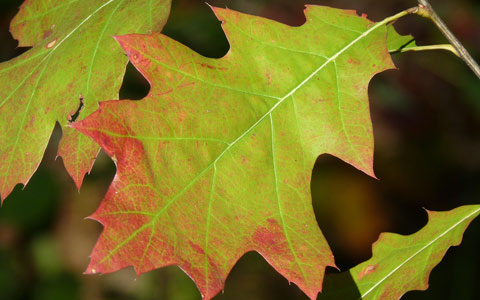
Due to the difference in porosity, species in the red oak group are more easily infected by oak wilt and die more quickly than the white oak group species. In fact, infected trees in the red oak group may die off within a single summer season, where those in the white oak group can persist for several years after being infected.
Another difference is that trees in the red oak group produce fungal spore mats that facilitate the “above ground or overland” spread of the pathogen, whereas the trees in the white oak group rarely produce them.
How to Identify Oak Wilt Disease
Oak trees infected with oak wilt present the following symptoms:
• Leaf chlorosis
• Leaf drop (off-season)
• Dieback from the top down
• Veinal necrosis (Live oak species only)
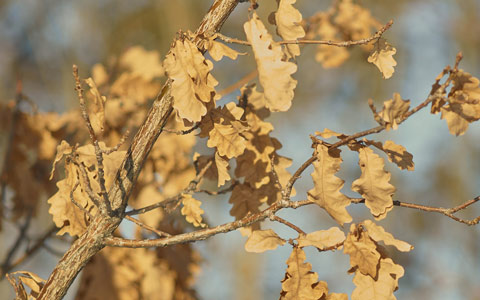
In most cases of infection, oak leaves will turn pale green and then brown while still attached to the tree. By the time they fall, the tree is likely dead.
This disease is dangerous in that it is extremely fast acting; it can kill a mature oak tree in a matter of two to four months while spreading from tree to tree via grafted roots.
Grafted roots occur when the roots of two or more compatible tree species meet and fuse together. Once roots are grafted, they gain the ability to interchange nutrients, water, and disease to each other.
If you suspect that your oak tree is infected with oak wilt, have your tree inspected by an arborist immediately.
How to Treat Oak Wilt Disease
Once Bretziella fagacearum has infected your tree, your fast action is required to halt this pathogen. There are two principle ways to treat oak wilt disease:
Fungicide Treatment – Propiconazole applications are an effective preventative measure. During the earliest stages of infection, this fungicide is injected through holes drilled in the root flare, to the tree’s water-conducting vascular system.
The success of this treatment is greatly influenced by the health of the tree and the fungicide application rate. Any time holes are drilled into a tree for this type of treatment, a professional should be hired to make sure the fungicide is applied correctly and that the holes do not become sources of further infection or infestation.
Trenching to Sever Root Connections – When a tree has been infected and fungicide treatments are no longer viable, trenching will help stop the pathogen from being transmitted from tree to tree by grafted roots.
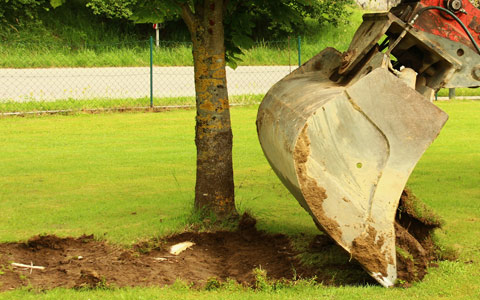
After identifying infected trees, a trench should be dug with a trenching machine, ripper bar, rock saw, or walk-behind trencher to a depth of at least 4 feet (trenches deeper than 4 feet may be required in deeper soil), and a minimum 100 foot radius around the infected tree(s).
Healthy trees within the trench are considered high risk and should be uprooted or removed to improve the effectiveness of the barrier. Tree removal should start immediately after trenching, beginning with the trees closest to the trench, and working inward thereafter until all of the trees within the trench have been eliminated.
An oak wilt contamination can be more easily contained when treatment begins early. Trees outside the trenched area should be monitored for several years after the infected area has been treated, and in the event of further infection, the same procedure (trenching and tree removal) should be repeated while the contaminated area is still manageable.
Oak Wilt Disease Prevention
Tree disease prevention begins with tree health. However, when it comes to oak wilt disease, special care must be taken to avoid infecting otherwise healthy trees. The following will help you avoid spreading the Bretziella fagacearum pathogen to your oaks:
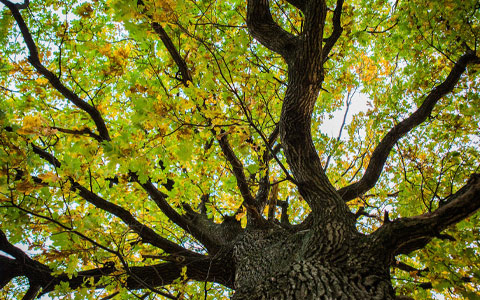
Tree Health – A healthy tree has defense mechanisms that help it stave off attacks from fungi and insect infestation. Whether it be exuding sap to close wounds made by insects, or compartmentalization to contain invading pathogens, the healthier your tree is, the more effective its defense will be. The following steps help you increase your tree’s vitality:
During prolonged dry seasons:
• Provide weekly deep waterings for your trees.
• Fertilize your trees before the growing season begins (February, and early March).
• Mulch your trees to avoid losing soil moisture.
• Inspect your trees frequently for wounds and weather damage (including surface roots), use tree wound dressing, wax based dressing, or latex paint to seal these wounds.
Pruning Activities – Pruning encourages new growth. However, in the case of oak trees, pruning them may provide an opportunity for Bretziella fagacearum to invade and kill your tree. Adhere to the following guidelines when pruning oak trees:
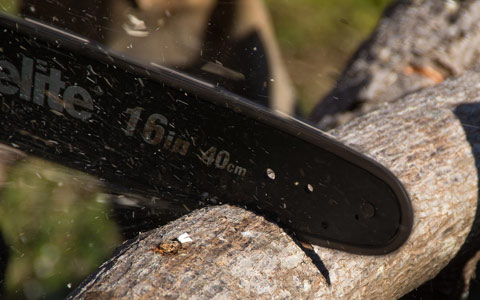
• From February through July, avoid pruning or wounding your oak tree(s). This period is when oak wilt fungal mats are most easily formed, and oak bark beetles (Scolytinae) and sap beetles (nitidulid) are most active.
• Pruning activities should take place during midwinter or extended periods of hot weather in late summer. (these are the periods which present the least threat to your oaks)
• Sterilize all pruning equipment between trees.
• Paint all pruning wounds with a tree wound dressing, wax-based dressing, or latex paint to create an immediate barrier to contaminated beetles or airborne pathogens, regardless of the time of year.
• Freshly cut stumps and wounded surface roots should be dressed immediately, as Bretziella fagacearum can be transmitted from tree to tree through grafted roots.
Diseased Tree Removal – Oak trees that are dead or dying from oak wilt disease should be removed and immediately burned or buried to prevent dissemination of the disease’s spores.
When dealing with infected trees, call on a professional tree service to handle the removal and destruction of these trees. They will also be able to assess the potential risk to surrounding trees and advise you on any further necessary preventative measures.
Firewood Awareness – Avoid purchasing or transporting unseasoned firewood. Since fungal mats may form on unseasoned oak firewood, you could be unintentionally spreading the pathogen to uninfected areas.
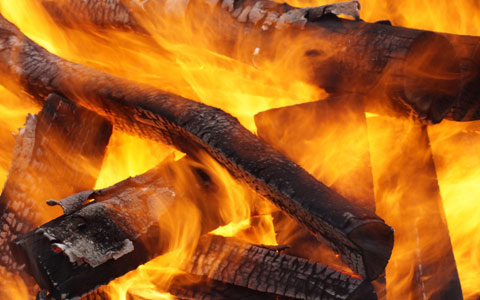
Seasoned firewood has been dried for a minimum of one year and poses little to no threat of spreading the oak wilt pathogen.
Oak Tree Disease – Bretziella Fagacearum
Your mighty oak tree can become infected and die in a matter of months. The Bretziella fagacearum fungus can spread by way of insects, airborne spores, and through grafted roots. By the time you identify the problem, you may be dealing with several infected trees on a fast-track to death.
In this article, you discovered vital information about oak wilt disease, how you can identify it, what you need to do to treat it, and prevention tips.
Your slow response to this fast-acting disease can not only result in the death of your tree, but also to the spread of oak wilt to numerous trees in surrounding environments. At the first sign of trouble, call a professional to help you assess the damage and required measures for containment.
Sources:
https://tfsweb.tamu.edu/OakWiltFAQS/
http://www.inspection.gc.ca/plants/plant-pests-invasive-species/diseases/oak-wilt/fact-sheet/eng/1325629194844/1325632464641
https://www.annualreviews.org/doi/abs/10.1146/annurev.en.07.010162.001551?journalCode=ento
https://www.canr.msu.edu/news/oak_wilt_disease_1
http://www.austintexas.gov/blog/oak-wilt-101
Notice: Undefined variable: page in /home/vrxdg1855sn3/public_html/wp-content/themes/72tree/content.php on line 15
Notice: Trying to get property 'ID' of non-object in /home/vrxdg1855sn3/public_html/wp-content/themes/72tree/content.php on line 15
9 Common Tree Health Problems and Solutions
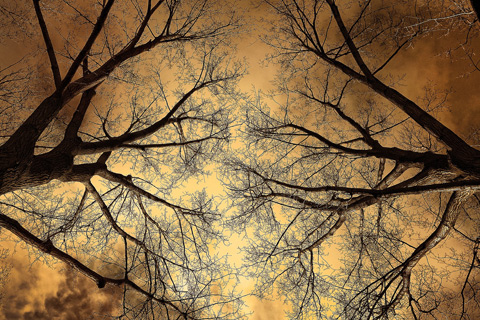
Trees get sick. Like any other living organism, a tree can fall ill for various reasons. If left to its own devices, it can eventually fall causing catastrophic damages.
When an otherwise healthy tree shows signs of illness or infestation, you must take action by eliminating the cause or calling on a certified arborist to evaluate the tree and offer a course of action.
The team of arborists at 72tree.com prepared a comprehensive list of 9 common tree health problems and their solutions.
Weather and Tree Health
Trees are affected by inconsistent weather patterns. The following demonstrates how weather impacts trees and how you can help them remain healthy.
1 – Drought:
One of the most common ailments of trees, symptoms of drought can be tricky. Sometimes, the signs won’t appear until as much as a year after the damage has been done. Those symptoms include:
•Drooping, wilting, and yellowing of leaves.
•Premature needle or leaf drop.
•Pronounced dieback.
•Thinning of the canopy.
•Deep cracks in the bark.
•Necrosis of leaves or browning of needles.
•Death of the tree.
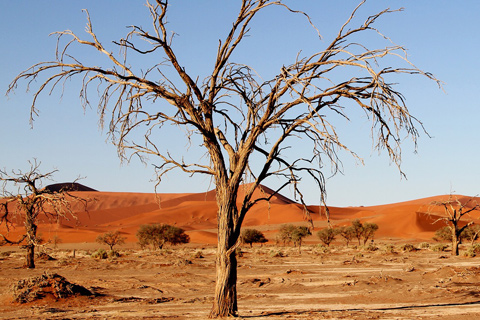
Solution 1 – For planting new trees, make sure they are appropriate for the USDA Hardiness Zone in which you are located. If your area experiences occasional or frequent droughts, seek drought-resistant species.
Solution 2 – Water your trees regularly. New trees will require a deep watering once a week for the first two years (to establish its roots). In addition to watering, add a 3-inch layer of organic mulch around the tree to help the soil retain its moisture.
After two years and through its adult life, trees are very capable of finding water sources. However, throughout dry summer months and near the end of fall, weekly deep watering and mulching will help prevent drought problems.
Solution 3 – Prune back all cracked, dead or weakened tissue. Without pruning these troubled areas, the tree will become vulnerable to infection and infestation. Call on an arborist when pruning removes more than 25% of the tree’s canopy or mass. They can assess the tree and offer a course of action.
2 – Winter Burn:
Also known as desiccation, winter burn occurs primarily in evergreens and causes a discoloration of the foliage. Effects of winter burn are more pronounced where the tree is exposed to the sun and wind. This affliction requires the presence of the following three factors:
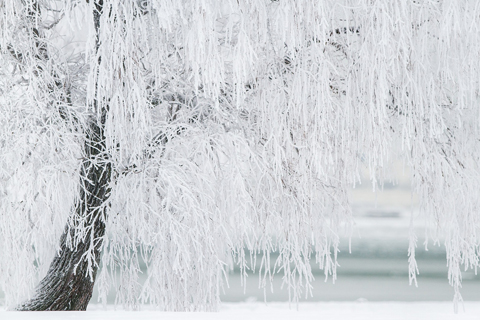
•Freezing temperatures
•Dry soil
•Wind
Solution – Provide your trees with weekly deep waterings through the end of fall and beginning of winter (before the ground freezes) and mulch the area of the root zone for the soil to retain moisture.
For trees that are highly exposed to the wind and sun, wrapping them with burlap will provide an effective barrier which can be removed as temperatures rise.
3 – Improper Pruning, Trimming, and Cutting:
There is a right way, and a right time to perform tree pruning, cutting, or trimming. When performed improperly, the tree may be left exposed to infection and infestation. When done at the wrong time, new growth may not have enough time to adapt before winter, further stressing the tree.
Solution – Know when to prune. Depending on the species of your tree, it may be better to prune in early spring, late fall, or even in the summer months. Use proper pruning or cutting methods when removing limbs, branches, or stems.
Watch this video to learn more about proper pruning techniques.
Tree Insect Infestation
For the most part, healthy trees can stave off insect infestations. However, when a tree’s health is weakened, or there is an increase in the insect population, no tree is off limits.
4 – Insects on Leaves and Bark:
Insects such as aphids, inchworms, bagworms, spider mites, lace bugs, and tree scale are common and relatively easy to manage.
Solution – Apply insecticidal soap, neem oil, or a horticultural oil directly on the area of the infestation.
5 – Boring Insects:
Insects such as the Emerald Ash Borer, Japanese Beetle, Southern Pine Beetle, and Ambrosia Beetle are more complicated to control. You can identify boring insect activity by seeing “sawdust” from their boring activity and the entry hole they create when entering the tree.
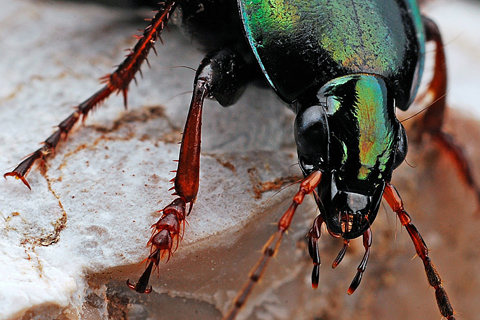
Note: Do not inject insecticides, poisons, or other substances into boring insect entry holes. The chemical may end up further damaging the tree leaving it more susceptible to infestation and death.
Solution 1 – Prune back branches and stems that have been infested and destroy them to prevent further spreading. If more than 25% of the tree’s foliage or mass must be removed, seek the assistance of a certified arborist.
Solution 2 – When the infestation is in the trunk of the tree, call an arborist to evaluate the damage and determine a safe approach to halting the infestation.
Solution 3 – Prevent infestations by keeping your trees healthy. When you hear about an outbreak in your area, treat your trees with a bark insecticidal spray to deter the insects from making your tree its host.
Tree Fungal Diseases
Most fungal diseases make their way into a tree through the roots and open wounds. Once a tree is widely infected, it becomes challenging to control the fungi and will often result in the removal of the tree.
6 – Fungal Infection (internal)
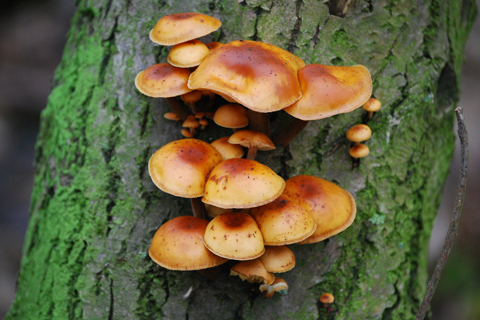
The most alarming sign of fungal trouble is when mushrooms grow on the trunk or branches. Since they require decaying matter to develop, there is a serious issue at play.
Note: The introduction of herbicides to a wounded tree or beneath the bark will only serve to accelerate the death of the tree.
Solution 1 – Prune back and destroy affected foliage, limbs, and branches. Again, when more than 25% of the tree’s foliage or mass must be removed, seek the assistance of a certified arborist. The removal of the tree may be the only way to keep your other trees from being infected.
Solution 2 – Properly prune your healthy trees (or have them pruned) to keep them healthy. A poorly pruned tree is more susceptible to both insect infestation and fungal disease.
7 – Fungal Infection (external)
The wind, birds or insects often carry spores of fungi and pathogens from tree to tree. Cankers, fire blight, rust disease, powdery mildew, and many others are common in the spring and summertime.
Solution – Carefully prune back and destroy affected foliage and apply a fungicidal spray to the affected and surrounding areas. Surrounding trees and shrubs should all undergo treatment as well.
Watch this video to learn about pathogens such as fire blight and cankers which affect tree bark and foliage.
Tree Problems Caused by People and Machinery
All of the threats mentioned above aside, people pose the most significant threat to a tree’s livelihood either by lack of knowledge or accident.
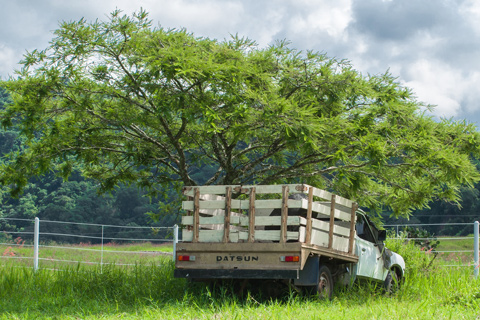
8 – Soil Compaction:
The land that surrounds a tree (especially under its canopy) contains the majority of the roots that draw water for the tree. These roots grow within the top 12 to 18 inches of soil. When this area is compacted, these roots suffocate and die, severely weakening the tree.
Trees compromised by soil compaction are at a heightened risk of toppling in a storm or severe weather event, as their roots are no longer effectively able to anchor them to the ground. Many times, no storm is required, the tree will eventually succumb to its own weight and fall on its own.
Solution – Never drive or park any vehicles underneath a tree’s canopy. Likewise, never store heavy equipment, or erect tool sheds under a tree.
In most municipalities nationwide, tree protection ordinances mandate that protective barriers be placed around trees on construction sites to deter such activities.
The majority of those same ordinances impose heavy fines and replanting requirements known as a recompense for damaged or removed trees.
9 – Lawn Mowers, Motorized Equipment, and Bark Damage:
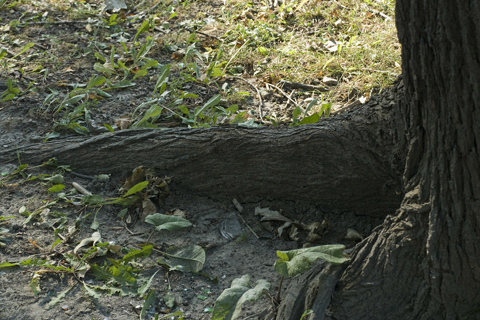
Below the bark of a tree and outer layer of roots, there is a thin layer of cells called the “phloem” which is the conduit for nutrients traveling up and down the tree.
When a tree’s bark is damaged, not only is the tree susceptible to infection and infestation, that flow of nutrients is interrupted and if the damage is around the majority or entirety of the trunk, the tree will be girdled and die.
Solution 1 – Do not allow lawn mowers and other equipment to damage protruding roots or the bark of the tree.
Solution 2 – For protruding roots, either raise the ground level to bury them, or carefully prune them. If you choose to prune the roots, call on a tree professional for detailed instruction or to do the job. Just cutting them out may result in the decline of the tree’s health and its death.
Solution 3 – If the bark of a tree is dried, cracked, or knocked loose, DO NOT remove it. Call an arborist to evaluate the tree’s situation.
Healthy Trees and Arborists
All arborists would agree that healthy, well cared for trees are capable of resisting most infestations and illnesses on their own. However, when a tree does present signs of trouble, knowing what to do can mean the difference between life and death for the tree.
Whether the troubles come from weather, insect, fungi, or people, the solutions are usually simple when detected and treated early. In many cases, to prevent the spreading of a pathogen or the demise of the tree, a certified arborist should be called in to assess the situation and determine a safe course of action.
When your trees show signs of trouble, doing nothing or hesitating to correct the problem may result in the decline of the tree’s health or even its abrupt death.
Sources:
https://www.treesaregood.org/treeowner/planthealthcare
http://www.missouribotanicalgarden.org/gardens-gardening/your-garden/help-for-the-home-gardener/advice-tips-resources/pests-and-problems/environmental/winter-injury/desiccation-or-winter-burn.aspx
https://www.arborday.org/trees/health/issues.cfm
Notice: Undefined variable: page in /home/vrxdg1855sn3/public_html/wp-content/themes/72tree/content.php on line 15
Notice: Trying to get property 'ID' of non-object in /home/vrxdg1855sn3/public_html/wp-content/themes/72tree/content.php on line 15
Tree Pruning Techniques
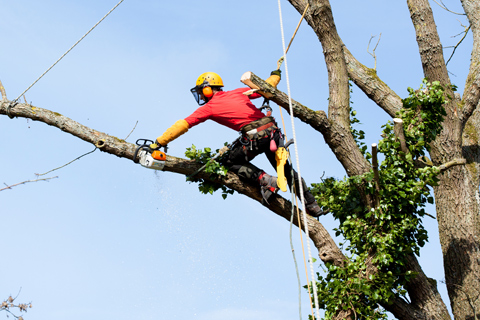
Your trees are constantly responding to environmental changes and throughout the year, they will need some help by way of pruning.
Tree pruning will help to improve the overall health of your trees, their overall appearance, and naturally reduces the possibility of tree failure. The improper pruning of a tree can stress a tree leading to potential decay, infestation, disease, and even death.
Below the arborist at 72 Tree, Seed & Land Co. discuss the different ways trees can be properly pruned.
Tree Height Reduction
When reducing the height of a tree, much care and precision pruning are necessary.
This procedure must be done correctly; “topping” or cutting through the main trunk often leads to several issues for the tree including failure.
Depending on the species and growth pattern of the tree, height reduction may not be possible without irreparably damaging the tree. In these cases, the choice to remove or relocate it may have to be made.
Tree Crown Raising
Crown raising involves the pruning, cutting, or removal of the lowest branches of a tree. This procedure provides more clearance under a tree for people and vehicles.
This procedure, when performed on younger trees, will encourage more growth in the upper branches. When raising the crown on older more developed trees, much caution is needed as the lower branches will be much larger and leave larger wounds.
Tree Crown Thinning
Crown thinning is a wise option for trees that sustain the full force of strong winds or have to bear the weight of accumulated snow or ice.
This is accomplished by the selective and careful removal of branches from within the crown. This process reduces the force of the wind on the canopy, as well as reducing the weight of snow and ice on the tree.
Care must be taken when thinning a crown. The improper procedure or over thinning can lead to disease, decay, infestation, or make the tree more susceptible to being blown over.
Tree Crown Cleaning
As the name suggests, crown cleaning is the removal of dead and dying branches. Crown cleaning is the more common of the pruning options.
This procedure helps to protect your tree by removing unnecessary weight, reduces the risk and hazard of falling branches, helps to halt the progression of decay and disease, thus improving the overall health of the tree.
Small or Ornamental Tree Pruning
Small or ornamental trees should be routinely pruned for many of the same reasons mentioned above. They may also be pruned for simple esthetics or to train them as they grow.
Professional Regular Pruning
Once aware of the signs your tree needs pruning, having your trees regularly pruned by a tree service or certified arborist will keep your trees healthy and beautiful. This will also benefit your landscape by the early detection of problematic infestations, fungi, or irregularities that may otherwise go unnoticed until it’s too late to correct.
An added benefit to regular pruning services is curb appeal. The better your landscape appears, the more curb appeal your property will have. This usually translates to a higher property value.
Overall, pruning is beneficial and necessary throughout the year. Follow these tree pruning tips, and visit our tree care blog more articles and information.
